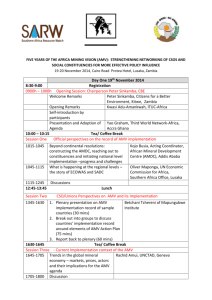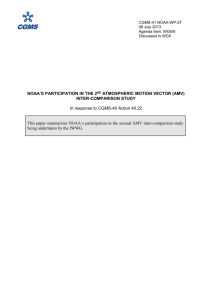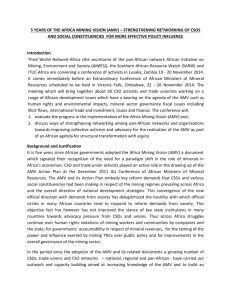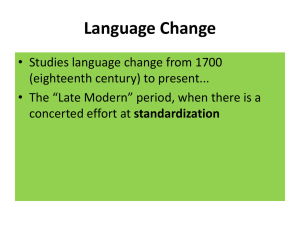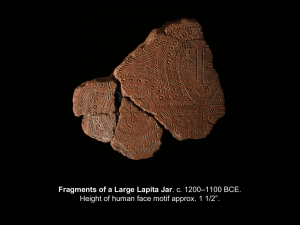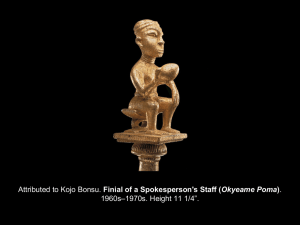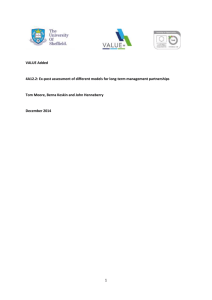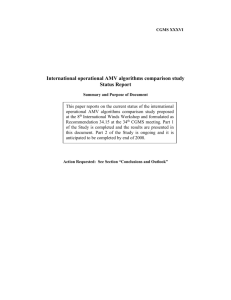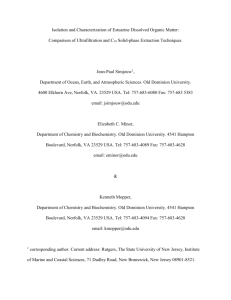Atlantic Multidecadal Variability and Its Climate
advertisement
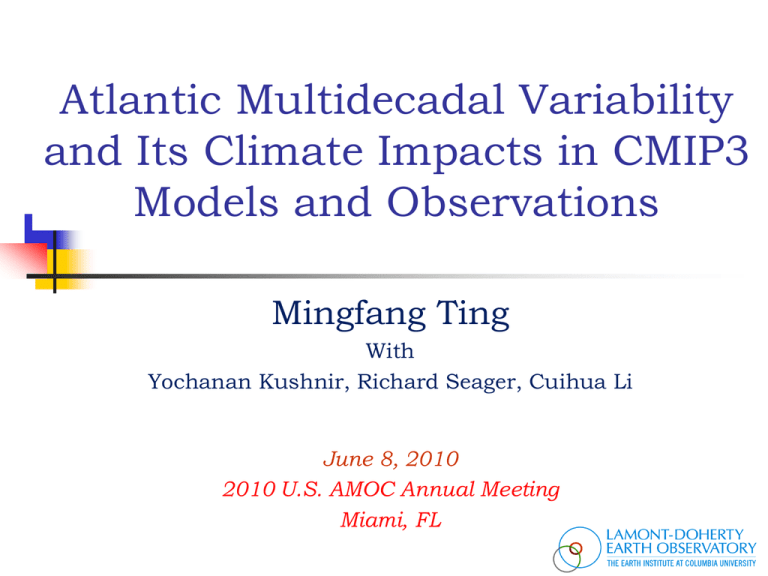
Atlantic Multidecadal Variability and Its Climate Impacts in CMIP3 Models and Observations Mingfang Ting With Yochanan Kushnir, Richard Seager, Cuihua Li June 8, 2010 2010 U.S. AMOC Annual Meeting Miami, FL Observed AMO (AMV) Indices Linear de-trending Global mean SST as forced signal North Atlantic SST Index (7.5W-75W, 0-60N, ocean only) for Models and Observations Signal to noise EOF PC1 as forced signal (Ting et al, 2009) Forced Atlantic SST in models Observed AMV Climate Impacts of Forced versus Internal NASST Variability (Regression based on Annual Mean) Internal Precip. Ts Forced (Stippled regions are for values significant at or above 95% confidence level) Questions to be Addressed: What are the spatial and temporal characteristics and climate impacts of AMV in CMIP3 models for both the 20th and 21st Centuries? Hoe do they compare to 20th Century observations? Is the signal to noise maximizing EOF method successfully separating AMV from the externally forced component? In this study… Apply signal-to-Noise Maximizing EOF Analysis to IPCC multiple model, multi-ensemble members of the 20th and 21st simulations First apply EOF analysis to deviations from multimodel average to determine the spatial structure of the internal modes of variability (noise) Apply a spatial pre-whitening transformation based on the internal EOFs to remove the spatial correlations in the internal atmospheric variability (i.e., “climate noise”) contained in the multi-model average Apply EOF analysis to the signal to get forced component S/N Maximizing EOF 1 for 19 IPCC Model Simulations 20th Century 21st Century Comparison of 20th and 21st Century AMV in CMIP3 Models 20th Century Obs. 21st Century Regression of Ts and Precip on Forced versus Internal NASST Variability (Annual Mean 20th Century) Forced Ts Precip Internal Ts Precip (Stippled regions indicate at least 15 out of 19 models have the same sign regression) Regression of Ts and Precip on Forced versus Internal NASST Variability (Annual Mean 21st Century) Forced Internal Ts Ts Precip Precip (Stippled regions indicate at least 15 out of 19 models have the same sign regression) Ts Regression (Annual) Internal (AMV) Forced Obs. Obs. 20th 20th 21st 21st Precip Regression (Annual) Forced Internal (AMV) Obs. Obs. 20th 20th 21st 21st AMV in Pre-Industrial CMIP3 Runs Can we reproduce AMV spatial patterns and climate impacts in a model without radiatively forced changes? If so, what are the typical time scales and amplitude of the AMV? What are the circulation features associated with the AMV? 20th Century AMV Amplitude Pre-Industrial 21st Century AMV Surface Temperature Regression (Annual Mean) Pre-Industrial 20th Century 21st Century Observations Stippling indicates sign agreement for 15 out of the 20 models or 5% significance (obs.) AMV Precipitation Regression (Annual Mean) Pre-Industrial 20th Century 21st Century Observations Stippling indicates sign agreement for 15 out of the 20 models or 5% significance (obs.) Atlantic Meridional Overturning Streamfunction AMV and AMOC Summary A robust spatial pattern of AMV is identified for observations, CMIP3 models’ pre-industrial, 20th and 21st Century simulations, despite the differing temporal scales between models and observations. The AMV spatial pattern is characterized by a commashaped SST pattern over the North Atlantic with the largest amplitude in the sub-polar region which extends to the tropical Atlantic along the east side of the basin. The precipitation patterns associated with AMV are remarkably similar for the pre-industrial and 20th Century model simulations, and to some extent for the 21st Century simulations and observations. The positive phase of AMV (warm North Atlantic) is associated with northward shifted Atlantic ITCZ, increased rainfall over Sahel and eastern tropical Pacific, and dry condition over tropical south Atlantic, North America and Australia.
